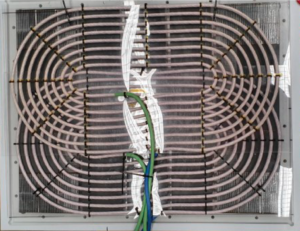Design of a SAE Compliant Multicoil Ground Assembly
Authors: Feiyang Lin, Grant A. Covic and Morris Kesler
Extended Abstract:
Inductive power transfer is a technology that enables power to be transferred from a primary (ground assembly) to a secondary (vehicle assembly) without a physical connection, simplifying the charging process. Recommended practice proposed by the SAE J2954 working group has put flux limitations for human exposure in stationary electric vehicle charging applications, constraining it to 27 μT RMS. In this article, a complete interoperability test is performed for the UGA and each of the vehicle assemblies presented in the SAE J2954 document. A new multicoil ground assembly (MCGA) is also proposed to reduce the leakage flux. The MCGA can decrease the flux levels by over 25% while enabling interoperable operation with all of the proposed vehicle assemblies proposed in the standards. As such, all the vehicle assemblies studied can meet the EMF requirements. In this work, the ground assembly is the main contributor to leakage flux, except when the DDP WPT3/Z3 secondary vehicle assembly becomes the main contributor. The proposed MCGA is also able to provide similar dc–dc efficiencies compared to the existing Universal Ground Assembly of >89% at the most misaligned point.

Additional information:
This work was done by researchers at the University of Auckland Power Electronics Department (https://www.auckland.ac.nz/en/engineering/our-research/discover/research-areas-and-facilities/power-electronics.html) and was in collaboration with WiTricity (https://witricity.com/)

